Japanese barberry understory invasion
Image credit: Leslie J. Mehrhoff
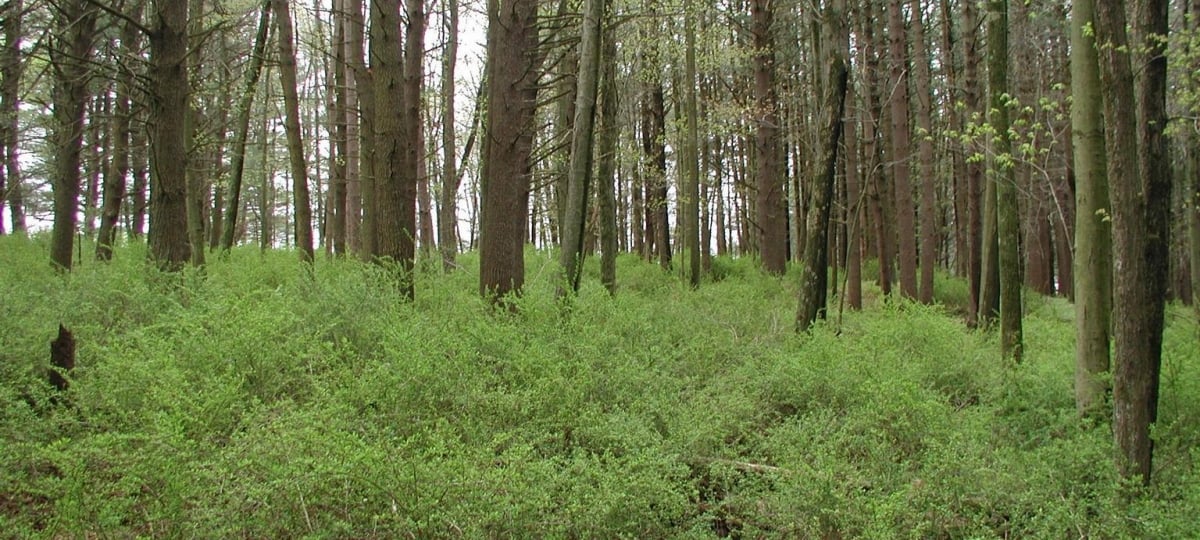
Japanese barberry understory invasion
Image credit: Leslie J. Mehrhoff
Japanese barberry, a woody shrub in the Berberidaceae family, is an understory invasive that can live in many different soil and light conditions. It has nitrogen containing roots (giving them a yellow color) and spiny branches.
For more information visit Woody Invasives of the Great Lakes (WIGL) Collaborative or Midwest Invasive Species Information Network (MISIN).
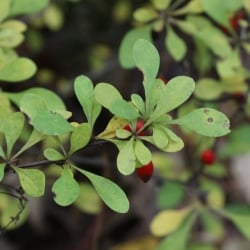
Japanese barberry leaves
Image credit: Leslie J. Mehrhoff
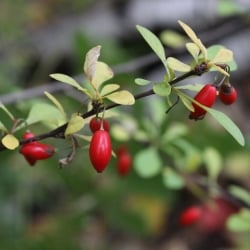
Japanese barberry berries
Image credit: Chris Evans
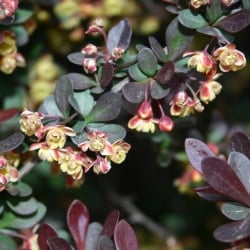
Japanese barberry, purple variant, with flowers
Image credit: Leslie J. Mehrhoff
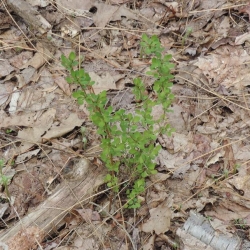
Young Japanese barberry plant
Image credit: Richard Gardner
Japanese barberry is a highly aggressive invasive species. It produces large amounts of seeds and has the ability to regenerate if segments of the root are left in the ground. Branches that make contact with the soil are also able to form roots when buried in the ground, a form of vegetative reproduction known as layering. This means it is crucial to remove all the plant material when managing barberry. Here at KISMA, Japanese barberry is one of the major species we deal with, having many sites that we return to each year to make sure new sprouts are pulled until the species is completely eradicated.
Note: All plant material should be removed safely and completely. Roots can be easily seen by their vibrant yellow color and easily told apart from other nearby tree roots. That said, many times the roots may spread quite far and require some digging to completely remove.
In place of Japanese barberry, planting native species such as ninebark (Physocarpus opulifolius), hawthorn (Crataegus sp.), and others are great alternatives. They are better food sources for wildlife and increase local biodiversity. Also, planting understory plants like ferns and other native terrestrial plants is great since they fill up disturbed sites and stop invasives from establishing there.